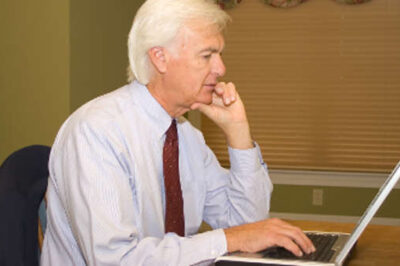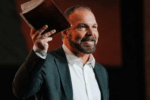Note: This
A new year invites us to reflect on where we are and where we’re going. I feel the invitation more strongly this year than most because 2015 marks Charisma‘s 40th anniversary. Much has happened since Charisma started in 1975. From humble beginnings, the magazine has done its best to chronicle the move of God in our generation.
Last August I wrote about the Assemblies of God centennial, which allowed me to share about our roots at Calvary Assembly of God as a “church magazine.” As a 24-year-old newspaper journalist, I was on fire for God and wanting to serve Him the best I could with my journalistic skills. The burgeoning charismatic renewal had touched my life, and I could see it breathing new life into some of the waning Pentecostal denominations that were turning off my generation with legalism and a pining for the “good ol’ days” of revival.
Now in our 40th year, I want to write a perspective on what has happened during these four decades. I am no longer a 24-year-old journalist, and Charisma is no longer a church magazine. My position has given me a front-row seat on the Spirit-filled church. So for 2015, I want to reflect as a 60-something on what I’ve seen thus far. My goal is not to draw attention to myself, but to humbly report what God is doing today in a way other media have not, dealing with the good and the not-so-good.
Charisma has continued the legacy of Christian Life magazine, which served a similar role in the 1950s and 1960s. Few are still alive who remember Christian Life in its heyday. But before there was a Christianity Today, before there was a CBN, Christian Life reported on the post-World War II emergence of the evangelical movement. In fact, Robert Walker, the magazine’s longtime editor, claims to have been the first to put a young evangelist named Billy Graham on the cover of a national magazine.
In the mid-1950s Walker, though from a denomination that looked down upon Pentecostals, received the baptism in the Holy Spirit after visiting the leaders of the Assemblies of God in Springfield, Missouri. He then wrote an article in Christian Life asking evangelicals if their disdain of the healing evangelists of the day meant they were missing all God had for them. This article was the first on what we later identified as the charismatic movement.
We think of this movement as beginning in 1960, when Father Dennis Bennett made his famous announcement about embracing the baptism in the Holy Spirit at St. Mark’s Episcopal Church in Van Nuys, California. But the new move of the Spirit went back to the healing revival, the Latter Rain Movement of the late 1940s and the emergence of the Full Gospel Businessmen’s Fellowship in the early 1950s.
When first identified by the press, it was called the Neo-Pentecostal movement, though the Roman Catholics must have chafed at the designation and later re-labeled it the “charismatic renewal.”
While the Spirit was being poured out, our nation was going through tumultuous times. A young president had recently been assassinated, there was war in Vietnam, and a new generation of Baby Boomers were discovering free love and drugs.
Derek Prince, one of the early leaders in the charismatic movement, believed this was a pivotal time. He liked to equate moves of the Spirit with what was happening in Israel—1948 was marked by the War of Independence and the beginning of the Latter Rain and the era of healing evangelists, while 1967 included the Six-Day War and the beginning of the charismatic renewal in the Roman Catholic Church.
During this time Christian Life reported on a few of these things. A young broadcaster named Pat Robertson was inviting people to give their testimonies on The 700 Club. Prince and a group later known as the Ft. Lauderdale Five began publishing New Wine Magazine, and in 1971, Dan Malachuk started Logos Journal, which focused on the Holy Spirit movement.
Into this setting Charisma was birthed in 1975. Next month we’ll talk about the turbulent 1970s and the beginning of the culture wars. I hope you’ll follow this series throughout the year as I give my perspective as a journalist who has spent his life observing and participating in one of history’s greatest moves of God. Join me as we continue to ask the key question: What’s next?
Steve Strang is the founder and publisher of Charisma. Follow him on Twitter @sstrang or Facebook (stephenestrang).







Leave a Comment
You must be logged in to post a comment.